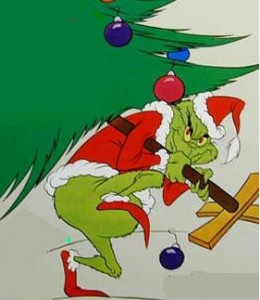In 1885, Dr. Sydney Galvayne, born in Australia, but an adopted son of Ireland, published a book. Dr. Galvayne had developed a system of training horses that lent him some considerable fame while he was alive, but his enduring legacy was his “perfect” system of aging a horse by looking at the horse’s teeth. The small book, Horse Dentition: Showing How to Tell Exactly the Age of a Horse up to Thirty Years, with Tabulated Forms of Cattle and Sheep Dentition, linked stages in a horse’s life with changes in his teeth. As a result, using this system, horse “experts” have been precisely identifying how old horses are by looking in the mouth ever since. In fact, one of the most celebrated features of the aging teeth, a groove down the side of the corner upper incisors, has even been named to memorialize Dr. G; it’s called “Galvayne’s Groove.

Some estimates of age, based on teeth (also known as a best guess, or, it you’ve spent a lot of time studying it, a SWAG*)
There are very elaborate charts that have been constructed with all sorts of details to help folks hone the edge of their precision. One can become engrossed in details such as cusps, dental stars, 11 year hooks, angles, and yes, that notorious groove. Using such details, one can come up with a remarkably precise estimate of a horse’s age.
Or not.
Don’t you just hate it when someone spoils all the fun? Like when you believed in Santa Claus: all was right with the world when he slid down the chimney, brought you some presents, and took a bite out of the cookie that you had left by the fireplace. Only eventually, you found out that it really wasn’t so (sad, really, but there’s not any hue and cry to suggest that the story shouldn’t be perpetuated the next batch of eager believers). But somebody eventually puts a lump of coal in the whole shebang.
Well, in the case of aging the horse, the Grinch who stole the happy celebration was Dr. J.D. Richardson, who, in the early 1990’s, actually looked at the claims made for the precise aging of horses by looking at their teeth, presented them in 1994 at the British Equine Veterinary Association, and published them, too. Now, as far as I know, Dr. Richardson is a fine, upstanding citizen, who loves children and horses, pays her taxes, makes her bed every morning, and is otherwise delightful to be around. But insofar as the aging-the-horse-by-its-teeth thing, she pretty much turned out to be the fly in the dental soup.
Dr. Richardson first took photographs of 434 thoroughbreds who had registration papers to document their true age. First, she documented the individual dental features (the ones that Dr. G was so keen on), and correlated those features with the known age of the horse . Her results showed that
specific ages cannot be assigned to the dental criteria because individual horses have a tremendous variation, and that, as a result, the estimation of the horse’s age from looking at its teeth is inaccurate, and sometimes wildly so.
But Dr. Richardson didn’t stop there. Next, she had four experienced veterinarians look at the horses, figuring that maybe experience was important. Nope. They couldn’t do it either; the conclusions were that horse’s age from dental criteria can provide no more than an “informed guess.” (Sadly, at least for Dr. Galvayne’s legacy, his famous groove proved to be “of no value” when it came to estimating the horse’s age.)
Of course, maybe it was just human frailties, right? Well, Dr. Richardson decided to cover those bases, too. She and her colleagues designed a computer program to age horses by their teeth. And guess what? There was little difference between the accuracy of the computer model and the human observers, that is, neither method provided an acceptable level of accuracy for aging horses from looking at their teeth.
Have you ever had the opportunity to know in advance when you are going to be wrong about something? I was at the meeting where Dr. Richardson presented her findings. She put up some pictures of horse teeth and had the veterinarians in the audience try to guess the age of the horses. We weren’t just wrong. We were often spectacularly wrong. In many cases, we would have had to improve to have been considered merely wrong. We were off by as many as 8 or 10 years in some cases. Truly humbling: but hey, that’s how science works.
Dr. Richardson did throw out a crumb to those dedicated tooth agers. You can be pretty accurate up to about 5 years of age, by looking at the horse’s front teeth. Just like human children, they lose their baby teeth at a pretty predictable pace. So, for example, horses lose their middle incisors (the front teeth) at 2 1/2 years, the ones next to the middle at 3 1/2 years, and the corners at 4 1/2 years. But after that, you’re pretty much taking a wild shot in the dark (See: SWAG*.)
So, really, trying to accurately estimate a horse’s age by looking at it’s teeth is really something that should be relegated to a party game. Think of it as Pictionary® in the barn aisle. Oh, sure, you should be able to reliably tell the difference between a horse that’s 6 and one that’s 18, but if you’re trying to tell if he’s really 14 or 15, you’re fooling yourself if you think that the teeth are going to let you know (and he could be 11 or 19 anyway). Of course, the horse doesn’t care – they just want you to make sure that the hay keeps coming. They’re not vain about their age anyway.
Sorry Dr. G. It was a great century of misinformation.
*******************************************************************
* SWAG = Scientific Wild-A** Guess










